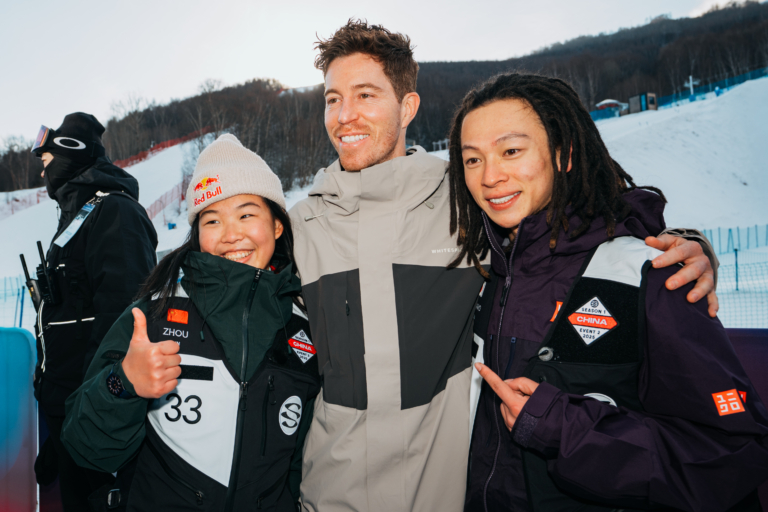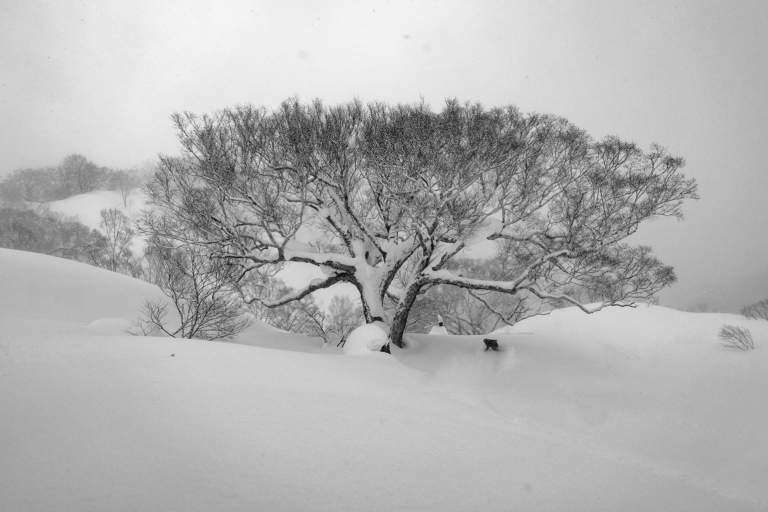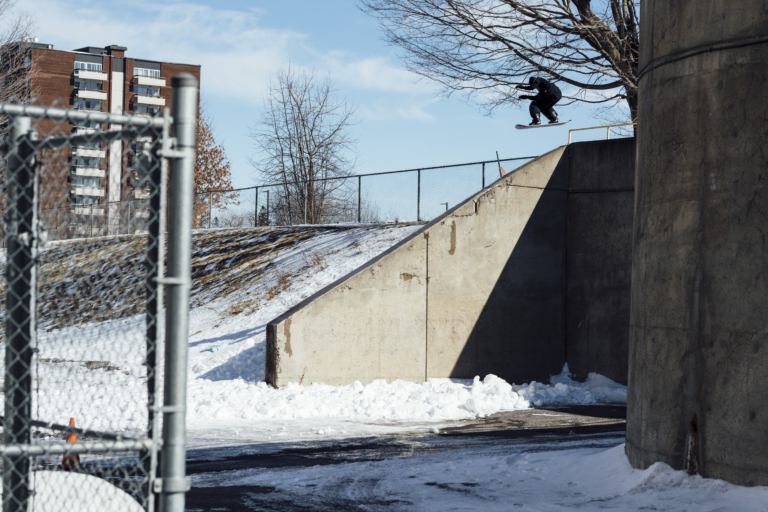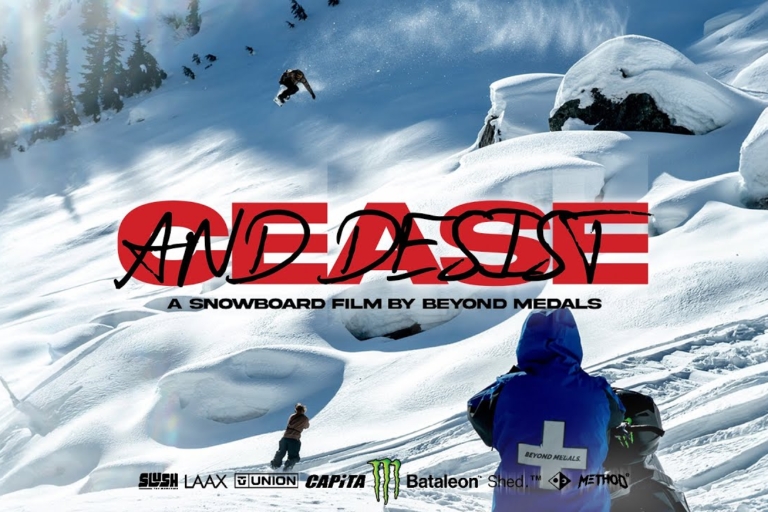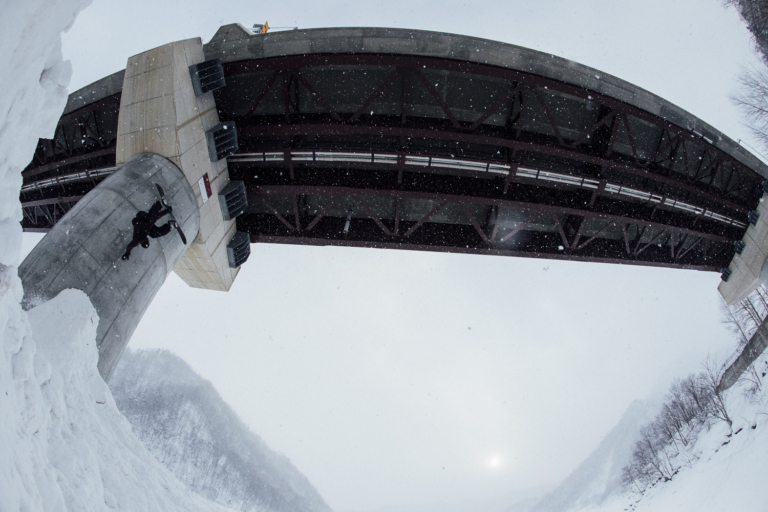For Travis Rice, the Alaskan stop of the Natural Selection Tour—the third and final event of the season—was the continually evolving culmination of years of consideration, momentum, and effort from the entire NST crew. Conditions aligned on all fronts, snow was near perfect, and the riding that went down during the event was bar-raising, video part-worthy, and just incredible to watch. And then on top of the accomplishment of just making this third and final stop of the Tour happen, in the Alaskan backcountry with an entire, remote basecamp, Travis won. He won not only the Alaskan event, but also was crowned the 2022 Tour Men’s Champion—a level of personal and collective achievement they usually make 30 for 30s about. One of the things that makes Natural Selection so exciting to watch, is that on any given day there are so many elements that can align or disrupt opportunity and affect what happens. And of course, the level of talent throughout the entire field is so high that on any given contest day, it’s truly anyone’s contest. When it came to AK, Travis was truly on one. The lines that he put down were most definitely worthy of the video parts that he has filmed, but even more than that, the element of chance for him to take the overall title, going into AK with 10 overall points, third from the bottom in Tour standings. For him to take the Tour title, he not only had to win, but other riders had to rack up points. In the magic of Alaska, the magic of Natural Selection, conditions aligned, Travis went next-level each time he dropped in, and he emerged victorious. By design and in this way, the Tour provides one of the most genuine and exciting looks at backcounty snowboarding specifically, as well as snowboarding as a whole, because when you’re out in the mountains—navigating the conditions, the unexpected, being able to use your knowledge and experience to think on the fly—it culminates in amazing things. We caught up with Travis after the event to get some insight into his experience in AK. – Mary T. Walsh
This year, year two of the Tour and the first year that it has been able to run as you and Liam and the crew envisioned it, with the three stops with point accumulation. Just the accomplishment of getting to AK and realizing that kind of goal for the tour must have felt really good.
Yeah, absolutely. We really had challenges. It’s an event that weighs upon probabilities of conditions of weather, of all of it. And I think the same challenges that make it difficult to pull these off, are also what makes these events so special. We put in equity in Jackson with marginal snow conditions and we put in equity in Baldface with the windstorm that hit us on the first day of the window. I didn’t want to state it out loud, but rolling into AK, it just had that feeling that we were going to get it. And sure enough, everything came into alignment for that event: weather, stability. And the logistics of putting up a basecamp, like the one that we had, so far away from anything and having it work so seamlessly—hats off to the Pulse Line guides, the crew, hats off to Sportsman’s Air, Regal Air, all the fixed-wing support that we had, Winterlake Lodge. A lot of people were rooting for us out there and it worked. It went off without a hitch.

Could you break down a little bit of what the snow conditions were there for the event?
About as good as it gets. It was deep, but the density gradient of the snow was such that you could still get speed; it was still high-performance snowboarding. I think maybe some people that don’t spend as much time in the backcountry, could assume that it’s just a couple different types of conditions, right? There are literally hundreds of different types of snow, like the density, how much, what type of crystals are in the snowpack and how big they were, how they’re bonded—I could go on and on, right? But I think the density of snow and how well it set up, especially the day of the event, it was a special day. It was a special day in AK and we were there to capitalize on it. Everyone put in their time, and in the classic Alaskan expression, you must be present to win. We were there. We were ready.

Can you shed a little bit on the terrain that you were riding, iconic Alaskan spine riding? What are some of the things that you consider when you’re riding faces like that?
Yeah. Look, those faces that we were riding up there, there are a couple different ways to describe them because there’s a lot of gnarlier terrain up there and they weren’t extremely expert by any means. I think a lot of people could ride down that face and enjoy their run. But they were incredibly complicated, and trying to ride them with speed and trying to have confidence in going over blind rolls, that’s where the hyper-expert element comes in. I think that’s why it’s such a sick venue. It’s such a good venue because everyone is challenged with it; there’s a lot that goes into like deciding what line you’re going to take. We had people approaching it in a lot of different ways, even though some of them were subtle. I think there was enough up there to speak to a lot of different riding styles.
Some people’s lines worked incredibly well and others didn’t. And the final’s venue, I was so excited to get three runs on that. I think we all were, and it was definitely unfortunate [when the weather came in] because I had three separate lines on there and I bet Torstein had different lines that he was looking at on that thing. There were so many options, and only getting to do one of them was a little bittersweet. But yeah, really, you look at that terrain and it’s just really unique. There was multiple riders that were like, “This is probably the best terrain I’ve ever ridden in my life.”
Throughout the entire event, there were runs being put down that were video part worthy. It was incredible to watch. During the event, did you get a feeling of, this is what we’ve been going for? This is the culmination of what we’re trying to provide, for the riders involved, for the people watching, for snowboarding?
At the start of this whole tour, the original intention was to be able to have contest runs that are worthy of a film part. That was the holy grail. That’s happened over the last two years in bits and pieces, but I think this event, especially, it really clicked. And I think you just touched on it, like there was a lot of stuff that people would put in part a heartbeat. Maybe it would even be, dare I say, like part ender.
I totally agree. Looking at this year’s event in Alaska, did you think you would already be at this point with the Tour, creating this opportunity for riding like this to go down, or was this something you wanted to get to eventually, like it was going to happen when it was going to happen, if that makes sense?
Yeah, I know what you’re asking. I think the cool part is that every event that we did this year had the potential to be what the AK event was. Literally, before we got hit with wind in Baldface, I’ve never seen that venue looking better. In Jackson, with all of the enhancement we did last year and the lead up to the event, had we had proper snow that venue would’ve been, I don’t know, 70% better than the first year. We’ve obviously spent so much time and effort and gone out of our way to make sure that at least the potential is there. Because that’s all we can do. It’s the only thing we have control over—we do the work and then we’re there at the time that we should be there. And then after that, it’s in God’s hands, so speak.
That’s what makes it so exciting, I think, that the uncontrollable chaos element of nature’s whims is such a major player.
And I think that, frankly, we’re still so early into this. This is only our second year. Natural Selection still has only four full-time employees. And I think inevitably where we want to be, there’s a several-year delay in actualizing those dreams, right? It’s a slow process and it’s hard work and the things that we want to do and are dreaming about now are probably going to take a few more years to get there. I think that the idea we had three years ago probably came to fruition a bit this year. We’re in it for long game and we’re just at the start of it.
Totally. I think this entire year, and specifically, the Alaska stop, is a testament to what you guys have created. The riders that want to be there, the level of talent that is coming together, and everyone’s collective drive—everything coalesces to create this opportunity for momentum, and you feel that watching the AK broadcast.
I agree. It’s awesome because I think everybody genuinely was psyched about it and wants to be there. I think that, and this in literal quotes, wasn’t necessarily our early goal for this tour, but I think the tour is doing the right thing if there is potential for you to have the best run of your fucking life in a contest run—maybe that’s not the most accurate, maybe it’s better to say, the most noteworthy, technical, big mountain freestyle run of your life.

Alaska is its very own breed of topography, weather, and snowpack. What do you feel it takes to excel in that terrain?
Faith, I mean if I had to sum it up in one word. I think a big part of it is believing in yourself and not second guessing, because I think people watch this show and it’s like, Okay, this person drops, this person drops. Well, there’s a whole other event that’s happening internally for every one of those riders, that’s like debating in your mind and trying to overcome the challenge of not speedchecking and having confidence going over a totally blind roller that looks intimidating as shit. You just see the valley floor and have to stick to your guns, like nope, this is the speed I need. This is the direction I’m going to go off this thing. So, a big part of it is really just having the faith that you’ve done your homework and you know where you are, you know what your line is, and you know what you need to know. And then in that moment, not speed check. You can see it in a lot of runs; there are a lot of nuances. We’re all looking at different types of gaps and challenges and some people checked and decided not to, or some people hit their line, but didn’t quite have enough speed or took it took a little bit of a wrong direction of something. I think that’s the biggest and hardest part of riding that type of terrain is how to put it together.
Along with the faith aspect, I’m sure it’s personal for everyone, but experience and “time in the water” so to speak, must come into play. Is there an element of that in providing a platform for riders who have not spent as much time in Alaska to have the opportunity to start to gain that experience? Take Jared Elston, for example, watching his runs, it seemed like a preface as to where he could go, given more time in AK.
Without a doubt, time and experience is super helpful for riding this type of terrain and terrain up in Alaska in general. You bring up Jared and looking back at his first run, the gap that he eyed up, to me, was pretty brilliant. He didn’t quite have enough speed and didn’t quite take the right line, but he hit this pillow toward the bottom of his line that had the most incredible landing after it. The fact that he saw that gap—I didn’t see that and honestly, all I’m looking for is gaps—it was cool to see him take that run.
On the first day of the Alaska Tour stop, when you and Torstein were trading off with the highest score of the day, and obviously the score itself isn’t the focus, but just the barometer of ranking, the pinnacle of what’s happening, the riding was just at this incredible level. What was going on for you that day?
Frankly, I don’t know if it was just that I didn’t sleep that well the night before or what, but everything was just working right. I think I took a lot of risks in that whole day, and there were risks that paid off, like stepping to the gap on the first run in qualifiers and lacing it, landing right where I wanted to. For me, that kind of just set the tone of the whole day. And then, even being able to get into the semi-finals because the semi-finals venue was looking so good. Everyone was in great spirits, but you know every single person that wasn’t in semis was like, Damn it, I wish I could get a run down that face, just because it was such a dynamic venue. And for me, I just I took some risks and they worked out, they don’t always work out. But that day, by the end of that last run, some days you just feel fucking tuned in and for me, that was absolutely one of those days.

There had been set such a benchmark set during semis, and then that storm moved in during finals. That is part of the nature of the beast, but what was your experience with the crew, being in that position when Mother Nature shut down visibility?
Yeah. It’s unfortunate because I think all four of us in the finalist group were so psyched to get three runs each on that face. That face was so hard, I don’t know, there were almost more options on that face, than there was on the [inaudible]. I had some big plans. I’m sure Torstein had some shit. I imagine both of us were thinking the same way: lay a fucking good rundown and then build upon it. But with weather, she’s a fickle beast. The reason the snow’s so good in Alaska and things look as great as they do is because it snows a lot. It’s such a hard place to forecast for—the intersection of massive bodies of water and mountain ranges in between the Arctic and jet streams—it’s just a wild place. We thought had until two o’clock and when [the weather rolled in], Torstein and I tried to wait it out for like an hour. Then, it just got worse. So we had to go, and it actually got kind of gnarly, like picking up all the camera crew and breaking down the finish line.
So, it’s the first year that you guys have been able to run Natural Selection properly as a point accumulating, multi-stop tour, like you’ve wanted to, and then you get to AK conditions are ideal. Then, you walk away not only with the win at the event, but then the point standing to win the entire tour. There’s so much at play there, as an individual competing and as the catalyst behind this entire movement of this event. What does this mean to you to have all of this culminate in something incredible in AK, both for you personally, as well as for the overall tour?
It feels, I guess, it just feels right. It feels like there’s purpose to all the effort from so many people that have put ton into this. I think it’s just got that air of, I don’t know, doing the right thing. It just feels like the right thing and to have it work…and the intention of this thing is symbiosis, where everyone involved is getting something out of it, even broad-reaching components of it. So, yeah, I think there’s an air of contentment to it.

And finally, sharing the win on the women’s side with Hana, a close friend of yours for a long time—you guys have really come up in snowboarding together. How was that?
Yeah, 39-year-olds taking it home. Freaking epic, so good. Hana and I came up together and we have so much history. It couldn’t have been sweeter, with everything that we’ve been through and stand together after that event. It just felt right.

